Intermittent fasting is easy to implement, yet it’s an incredibly powerful method for losing weight and improving your overall well-being.
More importantly, it’s the best and cheapest anti-aging method you can find.
Additionally, an intermittent fasting diet has the following scientifically-proven benefits:
- Activates autophagy, the body’s maintenance program to remove and regenerate damaged cells.
- Enhances immune function.
- Improves body composition in athletes.
- Improves insulin resistance.
- Naturally increases the production of growth hormone, which can help competitive and high-intensity athletes build muscle.
- Normalizes blood sugar levels and lipid levels.
- Prevents neuronal death.
- Reduces blood pressure.
My wife and I do CrossFit, have been on a paleo diet since 2015, and started intermittent fasting using the 16/8 method in 2018. I’ll tell you more about the 16/8 fasting diet and other techniques in a bit, so hang tight!
Thinking back, I have always had relatively low body fat (in the range of 12% to 13%). But over the past few weeks, some of my fellow CrossFitters have noticed how my body has transformed. Some have even approached me to learn more about my dietary habits.
As a result, I decided to dig more into the benefits of intermittent fasting, its short-term and long-term effects, and the scientific research behind the practice. Continue reading to learn what I discovered.
Losing weight is one of the most common dietary challenges in contemporary society. There are hundreds of diets that offer wildly different recommendations for caloric limiting and fat-loss, including the plant-based diet, the low-calorie diet, the low-carb diet and the ketogenic diet (among many others).
Some are OK if not ideal from an overall health perspective, while others are downright dangerous. And unfortunately, dietitians don’t always agree on the pros and cons of each dietary approach.
On one hand, the information era that we live in makes it possible to find and evaluate all these contradictory viewpoints. But on the other hand, it’s easy to become overwhelmed trying to make sense of so many different perspectives and arguments. In the end, you might wind up not wanting to eat at all.
Funnily enough, not eating — which is also known as fasting — is an effective and safe weight-loss method when practiced correctly. In fact, it’s a natural approach with evolutionary foundations that has many health benefits, as you will learn in this article.
The Evolution of Fasting
Fasting has a long evolutionary and spiritual path that is already marked in our history as a species. In today’s Western world, we predominantly consume a calorie-dense diet paired with sedentary behaviors. Daily stress, convenience foods, and digital entertainment continuously influence our lives and have caused a sudden spike in rates of obesity and metabolic disease.
But in nature, mammals (and even hunter-gatherer anthropoids) have very different dietary habits. Their eating patterns are less frequent than ours, they eat nutrient-dense foods, and they naturally practice a form of intermittent fasting — just as our early ancestors did.
After all, agriculture didn’t exist as we think about it until about 10,000 years ago, which is hardly a blip in the context of our evolutionary timeline. Prior to that, we ate what we could catch, kill, find and grow without the help of farming techniques. Some days, there wasn’t much food to go around and we simply didn’t eat.
Don’t be afraid to skip breakfast — it’s not the most important meal of the day!
Our Homo sapiens ancestors were hunter-gatherers, and they didn’t schedule three to five meals a day, with a particular emphasis on breakfast as the most important of the bunch. They dealt with natural dietary fluctuations depending on the climate and food availability, and abstained from eating for many hours at a time without any significant side effects.
What’s more, you wouldn’t expect to see a Paleolithic man walking around with belly fat and Type 2 diabetes, right?
As such, intermittent fasting is not a novel concept for humans. But for many of us, it challenges our false preconceptions that skipping breakfast is dangerous because it’s the most important meal of the day, and that failing to eat frequently enough causes your muscles to fall into catabolism.
However, the good (scientifically observable) results of intermittent fasting and the health benefits derived from it strongly refute the opinions and prejudices of even the most stringent critics.
Catabolism is the breakdown of (muscle) cells.
Evolution has programmed our bodies to have periods of eating and fasting. That does not mean you have to starve yourself, which is an extreme measure that would likely cause several metabolic problems. Instead, it’s a way to naturally balance your daily caloric intake by eating nutrient-dense foods without any dietary restriction while adhering to a flexible fasting schedule.
Types of Intermittent Fasting
As we go through the different fasting methods, you’ll realize that it’s not as difficult as it sounds — and that you may have practiced intermittent fasting once or twice already without even realizing it.
Intermittent fasting is a safe and healthy way to lose weight and feel better — and it’s a lot easier than you think.
Some intermittent fasting methods are quite flexible and easier to follow than others.
During a fasting period, you’re allowed to drink water and other non-caloric beverages (hence why it’s sometimes referred to as water fasting), and all of these fasting methods will enable you to eat almost any type of food that’s available during your eating window (as long as it’s nutrient-dense and healthy).
Below is an overview of various types of intermittent fasting.
- Time-restricted eating
- The 16/8 method
- Alternate-day fasting
- Spontaneous meal skipping
- Eat-stop-eat
- Extended fasting (over 24 hours)
1. Time-Restricted Eating
Time-restricting eating is an easy way to get used to an intermittent fasting routine. It basically means that you eat during a 12-hour window and then fast for the next 12 hours. Then you rinse and repeat.
If you count your sleep as fasting time (depending on how much time you spend in bed), not eating for 12 hours should be easily doable for most people.
2. The 16/8 Method
This is a flexible daily intermittent fasting schedule that involves a 14 to 16 hour fasting period, which is typically linked to your circadian rhythm. You can achieve that by not eating after dinner and counting your sleep as fasting time.
Then, when you wake up the next morning, skip breakfast. If you ate at 8 p.m., you’d complete the 16-hour fast at noon the next day.
My wife and I have been fasting using the 16/8 method since late 2018 and it’s now part of our normal routine. As a result, we don’t even have to make an effort anymore and we usually don’t feel hungry during the fasting window.
3. Alternate-Day Fasting
This is a type of full-day fasting, and a more rigorous version of the eat-stop-eat method described below. With alternate-day fasting, you consume a normal diet on Day 1, consume zero calories on Day 2, and then repeat.
Whereas eat-stop-eat represents an occasional break from eating, ADF requires a major ongoing commitment to metabolic change. It may be difficult to sustain, and it certainly isn’t right for everyone.
However, studies have shown that it has significant long-term weight loss effects and may reduce cardiovascular risk (i.e., the risk of heart disease) — especially for people who are classified as obese.
4. Spontaneous Meal Skipping
Rather than following a set fasting plan, this is neither structured nor scheduled. It’s simply a matter of skipping one or two meals a day, based on whatever criteria you like, and eating a healthy and well-balanced diet the rest of the time.
5. Eat-Stop-Eat
In contrast to the 16/8 method, which is a daily intermittent fasting regimen, the eat-stop-eat intermittent fasting plan involves a 24-hour fast once or twice per week. (This is sometimes referred to as day fasting.) It’s more challenging than the 16/8 method, and I don’t recommend it if you’re new to fasting.
On the bright side, this method has significant long-term fat loss benefits if you keep your food portions the same on your non-fasting days and maintain a well-balanced diet.
I’ve recently started engaging in one 24-hour fast per week because of its health benefits, which I’ll get into in a bit.
6. Extended Fasting (Over 24 hours)
While I’ve found it relatively easy to maintain a 16/8 fasting schedule, extending those fasts to 24 hours and beyond can be challenging.
A few months ago, I introduced one extended fast per month of 36 hours or longer, with my longest so far clocking in at 48 hours.
I started doing that because extended fasts have unique health benefits related to cell renewal and immune system support that you won’t get — at least not to the same extent — with shorter fasts.
To make extended fasting more practical for me, I usually do them when I travel for work. That way, I don’t have to worry about food. That might sound odd, but I’m on a ketogenic paleo diet and finding healthy sources of food on the go isn’t always easy.
By not eating, I have one less problem to worry about.
Pseudo Fasting Routines
The following two routines are often associated with fasting or intermittent fasting, but are not actually fasting regimens. While both reduce your caloric intake during certain times of the day, you won’t reap the same benefits as if you stopped eating completely.
The 5:2 Diet
This is one of the most popular “intermittent fasting” regimens — probably because it’s also one of the easiest to adopt. It rose to prominence in 2012, after the popular British TV personality Michael Mosley discussed his experiments with fasting on the BBC.
However, please take note of the quotation marks I used above; despite what many people claim, the 5:2 method isn’t really a fasting program — it simply implements a temporary calorie restriction.
On the 5:2 diet, you eat normally for five days out of every week, and then on two non-consecutive days you follow a low-calorie diet, cutting your calorie intake to 25% of your normal consumption. For most people, that tends to be around 500 to 600 daily calories.
This is a very conservative approach, and is less likely than the other methods mentioned above to achieve the benefits of fasting described in this article.
The Warrior Diet
This is also called the “day fast and night feast” diet because you can eat small amounts of fruits and vegetables throughout the day and one big meal at night.
However, it’s not like you can eat whatever you want while on the warrior diet; you still need to keep it healthy, sticking to food intake choices similar to those found in the paleo diet (which tends to be a low-carb diet with a focus on good proteins and healthy fats).
Much like the 5:2 diet, the warrior diet isn’t a true intermittent fasting routine and won’t offer the same health benefits.
Health Benefits of Fasting
Below is a combined list of health benefits associated with intermittent fasting.
- Slows down cell aging (anti-aging)
- Weight-loss
- Improves body composition in athletes
- Normalizes blood sugar and lipid levels
- Reduces blood pressure
- Lowers insulin resistance
- Enhances your immune function
- Protects brain cells (prevents neuronal death)
- May protect against Alzheimer’s disease
- Increases longevity
On a high level, those benefits are related to the following areas of your metabolism:
- Microbiome (bacteria in your gut).
- Hormone production and release (growth hormone and insulin).
- Cell health and immune system.
Before we dig into some of the primary health benefits of intermittent fasting, it’s important to step back and make sure we understand the basics of how fasting impacts our body.
At the most foundational level, fasting is a means of caloric restriction. This leads some people to think that a lower-calorie diet is a viable alternative to fasting. But while reducing your calorie intake might be an important factor for your overall health, depending on your dietary habits and activity level, fasting has fundamentally different effects on your body and its processes.
When you’re eating consistently (as you get hungry throughout the day, for example) your body maintains a constant cycle of fuel consumption and conversion.
When you eat something with carbohydrates — whether that’s a cantaloupe, a carrot or a cookie — your body immediately goes to work breaking down the glucose in that food and storing it in your liver and skeletal muscles as glycogen, which it converts to blood glucose and burns as needed for energy.
If, like most people, you eat three to five meals per day (with some snacks thrown into the mix), your body never breaks out of this cycle. So limiting your calorie intake — even substantially — does not fundamentally affect this process.
But fasting forces your body outside of this cycle. After a number of hours without food (the exact time period varies depending on a number of different factors), your body will have burned up most or all of its stored glycogen.
As a result, it needs to produce its own in order to keep you going. This begins a process called gluconeogenesis, in which the liver starts converting lactate, amino acids and fat into glucose.
This has a number of health benefits, but is particularly helpful when it comes to weight loss and body composition, as it prompts your body to use stored fat for fuel.
This process is sometimes referred to as ketosis (because the process of converting stored fat into fatty acid releases ketones, which are described later in this article), and it’s the basis for the ketogenic diet.
1. Slows Down Cell Aging (Anti-Aging)
Additionally, there’s an emerging body of scientific evidence that points to another valuable benefit associated with fasting and the process of gluconeogenesis: It may slow the cellular effects of aging and increase lifespan by changing the structure of your mitochondrial networks.
If you’re not a biology or chemistry major, here’s a simple explanation of what that means.
Cells are microscopic compartments filled with even more microscopic elements, which are called organelles. These organelles are connected by a membrane, and they are an essential part of the cells’ various biological functions.
Mitochondria are a type of organelle. More specifically, they’re the part of the cell that converts the food we eat into the energy that we burn. This has led many people to refer to them as “the battery of the cell” or “the power station of the body.”
A recent study out of Harvard, building on previous work highlighting the roles of mitochondria in aging and cellular degeneration, found that fasting helps keep mitochondrial networks in their “youthful state” for a longer period of time.
As many age-related diseases are directly related to the aging of cells, the health implications of these findings are broad and profound, and are in-line with earlier work showing a relationship between fasting and improved longevity in animal models (as described later in this article).
Intermittent fasting is an important part of the steps I take to try and slow down the aging process.
2. Weight-Loss
You might have stumbled across this article in search of a reliable method for losing weight, which is one of the primary beneficial effects of fasting. It’s a simple dietary habit that’s not difficult to apply, and the best thing about it is that you won’t have all the typical dietary restrictions that come with other regimens.
In other words, there’s much less (or no) focus on calorie intake or caloric restriction — you can eat whatever you want during your eating windows, as long as you keep it healthy and nutrient-dense. I recommend the paleo and/or keto diets for the best results.
The reason why intermittent fasting works for weight loss is pretty simple. After a meal, your body gets additional carbs, which increases your blood sugar levels. During fasting periods, your body uses those carbs in the energy creation and metabolic processes.
Once your body has used up all the available dietary carbs, your liver starts to release stored sugar by converting glycogen into blood glucose, as discussed in the previous section. After a while, your body will have also consumed all its available glycogen reserves.
At that point, your liver-brain-adipose neural axis is activated to switch your fuel source to start getting energy from your fatty tissue. It’s a similar principle to that of the keto diet.
Leptin, “the hormone of energy expenditure,” is a hormone predominantly made by adipose cells that helps to regulate energy balance by inhibiting hunger.
A recent study on intermittent fasting analyzed the 16/8 method for eight weeks in 34 males, showing that it’s an effective method for fat loss that does not affect muscle mass.
Intermittent fasting normalizes your levels of circulating leptin and may improve the leptin resistance in obese individuals.
Another study assessed the efficacy and safety of prolonged fasting and found that 24-hour fasting (such as the eat-stop-eat method), sustained over 12 to 24 weeks, reduces body weight by up to 9% and improves blood lipids in the process.
3. Improved Body Composition in Athletes
Intermittent fasting is suitable for athletes because there’s no reduction in muscle mass and it does not affect muscular strength.
Moreover, intermittent fasting improves the body composition in athletes, allowing them to optimize their proportion of muscle to fat.
It also increases the level of human growth hormone in males, which improves the quality of workout sessions and helps to build muscle.
Thus, intermittent fasting may be an excellent method for preparing athletes for competition, provided they adhere to an excellent diet along with a rigorous exercise schedule.
4. Normalizes Your Blood Sugar and Lipid Levels
Triglycerides, high (small) LDL particle counts, and blood sugar are the cardiovascular triad: common blood level alterations that increase your cardiovascular risk. Intermittent fasting has been found to improve triglyceride levels, total cholesterol, and small LDL particle levels.
When those variables are high, lipids start building up cholesterol plaques on the internal linings of the blood vessels, which in time reduces normal blood flow and causes severe cardiovascular problems.
Additionally, intermittent fasting trials on individuals with Type 2 diabetes show that patients can more easily control blood sugar levels when they engage in intermittent fasting for at least two weeks.
Thus, this method may be a potent aid in the treatment of hyperglycemia, as it starts showing results quickly. Reducing blood sugar levels is an excellent way to prevent vascular complications in people with diabetes, as well as to reduce the risk of Type 2 diabetes in healthy individuals.
5. Reduces Blood Pressure
Numerous studies have shown that intermittent fasting may cause a substantial decrease in blood pressure, another sign of cardiovascular alterations.
Along with blood lipid changes, body weight reduction, and other favorable changes in health biomarkers, scientists have regarded intermittent fasting as a viable option for decreasing coronary artery disease risk in obese individuals.
High blood pressure is a silent killer and it increases the risk of stroke and heart disease. Unfortunately, it doesn’t always display signs and symptoms while causing escalating damage to our internal organs.
In most cases, we can reduce blood pressure significantly by changing our lifestyle and diet. Consider intermittent fasting a suitable method for achieving that.
6. Lowers Insulin Resistance
As I mentioned previously, intermittent fasting has a sugar-lowering effect in diabetic patients. But it also enhances your insulin sensitivity if you’re pre-diabetic and do not yet suffer from diabetes.
Pre-diabetes is a condition in which your tissue no longer takes up insulin at the normal rate, causing your pancreas to release even more insulin. In time, your pancreas becomes “tired” from the double work and stops appropriately synthesizing insulin, which is why diabetes starts.
Intermittent fasting improves your circulating levels of insulin and increases your body’s sensitivity to this hormone. When your tissue is more sensitive to insulin, you don’t require high levels of it and thus your pancreas is less likely to become diabetic.
Intermittent fasting reduces fasting insulin levels, which is one of the markers of insulin resistance.
7. Enhances Your Immune Function
Recent research on immune function shows that prolonged fasting may also strengthen your immune system in two different ways:
- By regenerating your immune cells, and
- By protecting yourself against damage caused by your immune system.
In other words, fasting promotes the recycling of your white blood cells by triggering stem cells to produce immune cells.
Additionally, intermittent fasting modulates inflammation, which is a form of exaggerated immune response that results in many different ailments.
According to a 2015 study, when extending the duration of nighttime fasting, as in the 16/8 method, our inflammatory markers are significantly reduced.
Thus, intermittent fasting may even improve some chronic inflammatory conditions, especially if we take into consideration that obesity itself promotes systemic inflammation.
8. Protects Brain Cells (Prevents Neuronal Death)
Studies in animal models have found that intermittent fasting increases neuronal response to stress and prevents neuronal injuries, an effect that may be achieved through the reduction of blood sugar along with all of the hormonal improvements previously mentioned.
As a minor side effect, you may feel a bit sluggish on fasting days. But don’t start to worry unless you experience significant symptoms like dizziness or confusion (which are uncommon).
9. May Protect Against Alzheimer’s Disease
For many years, there was a widespread belief that Alzheimer’s disease was purely a product of aging and genetic disposition, and that behavior and lifestyle played no meaningful role in its prevention, onset or development. But recent research is fundamentally reshaping our understanding of the condition, and suggests an important link between Alzheimer’s and diet.
Notably, a study conducted at the Johns Hopkins School of Medicine found that fasting for at least two days per week can protect against the buildup of amyloid plaques (amyloid-β). These plaques are a type of protein that attach to neurons, and are increasingly believed to play a prominent role in the development of Alzheimer’s.
The study’s lead author, Dr. Mark Mattson, explained to the Johns Hopkins Health Review that this is believed to be a result of ketone production, which is directly related to gluconeogenesis. Ketones are exclusively produced through gluconeogenesis, as fat is broken down into fatty acid.
Ketones are an acidic chemical compound that serve as an alternative fuel source for neurons (when glucose is low or unavailable), and they’re believed to broadly support brain health.
A 2017 paper in the journal Neurochemistry found that ketones “enhance mitochondrial respiration” (i.e., the process of energy production) while reducing inflammation and oxidative stress, which are both being explored for their relationship to the condition.
Fasting facilitates the production of ketones by triggering gluconeogenesis.
Mattson also found that:
“[…] intermittent fasting results in increased production of brain-derived neurotrophic factor (BDNF), which increases the resistance of neurons in the brain to dysfunction and degeneration in animal models of neurodegenerative disorders.”
Brain-derived neurotrophic factor is a protein that supports brain health and plays an essential role in long-term memory.
10. Increases Longevity
In other animal models, scientists found that rats that followed an intermittent fasting schedule not only lost weight but also increased their lifespan. Rats following a fasting schedule were also 66% less likely to die from a heart attack. The above-mentioned health markers are the apparent reason for these benefits.
The scientific community has carefully examined all of these health effects, and has provided sufficient evidence to consider them factual. As a result, we can refute all the prejudices about intermittent fasting and consider it a safe and healthy option to lose weight.
How Long Should You Fast?
The most common question I get asked about fasting is: “How long should I fast?”
The answer to whether you should fast for 12, 14, 16, 24 or more hours depends on two factors:
- What works for you.
- What benefits you want to get out of fasting.
My recommendation is to avoid limiting your goals to your current ability. In other words, what doesn’t work for you today might work for you tomorrow. So try to be flexible, learn and adapt.
For example, when I started fasting in 2018, reaching the 16-hour mark was challenging. These days, I don’t even have to think about it. So start with what works for you today and adapt as you go. Your answers to the two key questions above should determine which fasting method you strive for.
I’ve already talked about the overall health benefits of fasting, so now let’s figure out how those benefits are related to individual fasting routines and lengths.
Benefits of a 12-Hour Fast

The primary benefit of not eating for 12 hours is that you become more aware of food and how your body reacts to it. In other words, it’s a psychological benefit.
However, there’s also an important physiological benefit related to the bacteria in your gut. Studies on mice have shown that bad bacteria die quicker than good bacteria if you don’t feed them (such as by fasting).
In other words, if you have what’s called a dysbiosis —an imbalance of good vs. bad bacteria in your gut — a 12-hour fast can help you get rid of that bad bacteria, thus strengthening your microbiota.
Benefits of 16/8 to 20/4 Fasts

At roughly the 16-hour mark, your pancreas finally gets a break and stops producing insulin — the hormone responsible for shuttling glucose to your cells.
That’s an important step towards increasing your body’s insulin sensitivity. Remember that insulin resistance (the lack of insulin sensitivity) is a major contributor to most metabolic diseases!
Additionally, you probably get into a light state of ketosis and your body becomes fat-adapted. That basically means that your body can switch from using glucose to fat as its primary source of fuel — the ultimate goal of the ketogenic diet.
In fact, keto was originally invented as a more sustainable method to “not eating,” because while on keto the body can be in a permanent state of ketosis.
The good news is that ketosis protects your muscles from breaking down. That means you won’t lose muscle mass by fasting for 16-20 hours.
Benefits of 24-36 Hour Fasts

After about 24 hours is when things get interesting!
You get deeper into ketosis and further improve your gut microbiome. But the most important aspect of such longer fasts is the profound neuronal autophagy.
Autophagy is a cell recycle and renewal program that kicks into high gear after 24 hours of not eating. That means damaged cells get removed and repaired, which has a significant impact on how fast you age and the risk of damaged cells becoming cancerous.
Our primary care physician — who is also a proponent and practitioner of intermittent fasting — told my wife at her last annual physical that if she kept up her fasting routine, her risk of developing cancer is incredibly slim.
Considering that cancer is among the leading causes of death worldwide, that’s a powerful statement and should be a good enough reason for anyone to adopt an intermittent fasting routine.
Additionally, autophagy is the cheapest and most effective anti-aging routine you can implement. In 2019, worldwide spending on anti-aging products reached over $50 billion.
Next time you feel like spending money on a lotion that won’t work, why not fast for 24 hours instead and let your body get rid of and repair the damaged cells that make your skin age?
If you’re not convinced yet, check out this research paper that was just published early in 2019 titled “Hallmarks of Aging: An Autophagic Perspective.”
Benefits of Longer Fasts (36h+)

If you extend your fast beyond 36 hours, you’ll get even deeper into ketosis and you’ll likely notice changes to your state of mind. I usually feel super sharp and mentally clear while fasting for extended periods.
Additionally, you’ll probably notice accelerated weight loss and your growth hormone (HGH) levels will begin to spike. While an increase in HGH also has an anti-aging effect, it’s one of the reasons why you can retain your lean muscle mass during fasting.
Many people think that if you don’t eat for two days, you’ll lose a lot of your muscle mass. That’s not true because both ketosis and HGH protect your muscles from catabolism (the breakdown of muscle tissue).
Of course, if you keep fasting for several days, you’ll eventually lose some muscle tissue. But I wouldn’t worry about that, unless you’re a competitive weightlifter. I’ve done a few 48-hour fasts already and I look as sharp as ever.
Summary — Benefits vs. Length of Fast

Here’s a quick overview of what we’ve discussed above. Print this out and hang it on your fridge, if you like.
| Benefit | 12h | 16-20h | 24-36h | 36h+ |
|---|---|---|---|---|
| Heightened food awareness | ✓ | ✓ | ✓ | ✓ |
| Gut microbiome improvements | ✓ | ✓ | ✓ | ✓ |
| Light ketosis | ✘ | ✓ | ✓ | ✓ |
| Improved insulin sensitivity | ✘ | ✓ | ✓ | ✓ |
| Deep ketosis | ✘ | ✘ | ✓ | ✓ |
| Autophagy | ✘ | ✘ | ✓ | ✓ |
| Increase in growth hormone levels | ✘ | ✘ | ✓ | ✓ |
It’s important to understand that everyone reacts slightly differently to fasting. That’s just because of differences in our genetic makeup and physiology. So, for example, you might get into a light state of ketosis at 14 hours while someone else has to fast for 16 hours.
While testing if you’re in ketosis is easy, it’s difficult to test for autophagy. That’s why I try to err on the side of longer fasts.
Tips for Intermittent Fasting
To help you get the most out of your intermittent fasting plan, here are some recommendations that have worked well for my family.
Don’t Break Your Fast With Carbs
Remember that as we’ve discussed, one of the most significant positive effects of fasting is that it makes your body start using fat for energy. You can further prolong that effect by breaking your fast with foods that are low in carbs and high in protein and healthy fats. If I end my fast mid-morning, I usually do so with a small meal consisting of:
- Pasture raised eggs
- Sauteed spinach
- Avocado
That way, my body doesn’t get overloaded with carbs, which would result in a spike in insulin.
Drink Green Tea to Suppress Your Appetite
Green tea has a lot of catechins, which are naturally-occurring plant compounds also known as polyphenols. Those catechins can help suppress your appetite, and may even help with burning fat via a process called thermogenesis.
One of my favorite products is the tea crystals offered by Pique Tea. If you’re a tea drinker, I recommend giving them a try.
Keep Your Meals the Same As Always
Just because you’re fasting doesn’t mean you should eat more outside of your fasting window. In other words, you don’t need to make up for missed meals.
Depending on your dietary goals and level of activity, you may want to make up some of the “missed” calories. Just don’t overdo it.
Fasting and High-Intensity Workouts
Some people have asked me how I schedule my fasting hours and food intake around CrossFit workouts. Specifically, they wanted to know what I would eat before of after a session. The truth is, my workout schedule doesn’t impact my fasting schedule very much.
My wife and I usually work out in the morning, about 12-14 hours into our fasts. After the workout, we don’t eat for another couple of hours, until it’s lunch time.
Regarding post-workout meals: I know that my body would benefit from leveraging healthy protein powder immediately after a workout. I also realize that addressing that need could improve my workout recovery time.
However, I’m not a competitive athlete, and I fast to improve my overall long-term health. If my performance as an athlete takes a bit of a hit because of that, I don’t mind. If physical performance is your top goal, I’d recommend modifying your fasting schedule.
Alternatively, you can use individual amino acids (such as branched-chain amino acids) during and after a workout, although it’s worth noting that there’s some disagreement about whether supplementing with branched-chain amino acids pulls you out of your fasted state.
Technically, BCAAs have a small amount of calories and are utilized as energy, so in the eyes of some, consuming them means you’re not truly fasting.
However, if you’re doing serious athletic training while in a fasted state, the muscle mass and recovery benefits may outweigh the small violation of your calorie restriction.
As far as pre-workout supplements are concerned, I use only natural products that don’t contain sugar or other sources of calories. That way, I can have them if I work out while fasting.
Last but not least, I often schedule my longer fasts for days where I don’t work out. That’s because I feel hungrier on days that I work out, simply because of my higher energy requirements.
Combining Intermittent Fasting with the Ketogenic Diet
Intermittent fasting and the keto diet have many of the same benefits, and some people combine the two. The goal of each is to tap into and ultimately deplete your body’s stored glycogen, and fasting while on the keto diet may help you achieve ketosis more quickly than by following the diet alone.
However, I would not recommend starting an intermittent fasting program and the keto diet at the same time. Both represent significant changes to your dietary routine, and both have been linked to short-term changes in mood (such as increased irritability) as your body and brain adjust to your new regimen.
While both the ketogenic diet and intermittent fasting offer some overlapping benefits by reducing blood insulin levels, fasting provides additional benefits you shouldn’t ignore.
For example, as noted earlier, extended fasting (beyond 24 hours) turns on autophagy, the body’s natural program to recycle damaged cells and regenerate dead cell components.
The word autophagy literally means “self-eating,” and it’s an incredibly powerful way to remove pre-cancerous cells — which we all naturally have — from our body.
You don’t have to do that every day, but I recommend that you extend your fasting window once a week beyond 24 hours to benefit from autophagy.
Intermittent Fasting: Is It for You?
Almost anybody can enjoy intermittent fasting benefits. But there are exceptions!
Don’t start any fasting routine if you’re pregnant. Also, some medical professionals have claimed in the past that if you’re a woman, prolonged fasting of 15 hours or longer may cause hormonal imbalances.
I haven’t found enough scientific evidence to support that claim. As a result, I no longer recommend that women limit intermittent fasting to three to five days per week instead of doing it every day.
Also, if you have diabetes and take medication to lower your blood sugar, ask your physician before starting any new diet (including one that integrates a fasting protocol). Similarly, if you suffer from gallstones and thyroid problems, ask for professional advice first.
Finally, if you have any other unique health circumstances, daily calorie requirements, or medical conditions that are not mentioned here, you should consult with a doctor before starting a fasting diet.
Individuals with eating disorders should not adopt a fasting program. If you think you might have an eating disorder, I strongly encourage you to seek help from a qualified medical provider.
Frequently Asked Questions

Feeling hungry sucks. But the good news is that you can easily manage your hunger by using a few simple tricks.
First of all, you have to differentiate between hunger and low blood sugar. If you’re used to a diet that’s high in carbs, your blood sugar and insulin levels are on a roller coaster with constant ups and downs.
Any time your blood sugar is low, you crave carbs to raise it. To break out of this vicious and unhealthy cycle, stop eating carbs and replace them with healthy fats. If you do that, fasting becomes so much easier and more sustainable.
If blood sugar isn’t the cause of your hunger, then it’s usually a hormone called ghrelin. Your body usually releases ghrelin around the time it’s used to receiving food. I feel naturally hungry every day around lunch and dinner time, because that’s when I normally eat.
The good news is that ghrelin levels go down within an hour or two. So if you just wait a little bit, your feeling of being hungry will disappear. Realizing that has helped me tremendously in pushing through longer fasts.
The downside of ghrelin is that it’ll return at the next meal time.
The way to curb your body’s response to ghrelin is to drink coffee or tea. When I’m fasting while traveling, I sip on hot tea all day.
For a good video that explains the relationship between hunger and ghrelin, check out this link. And for more details on this topic, read my complete guide how to curb your hunger during a fast.
Yes, you absolutely can!
Note that it’s a myth that you can’t work out or build muscle with intermittent fasting. You can easily fast for 14 to 16 hours along with an intense workout routine without impacting your physical performance.
In fact, as noted earlier, fasting increases growth hormone levels, which can actually improve the effectiveness of your workouts. But if you’re fasting for more than 24 hours, it’s better to limit your physical activity and be attentive to your symptoms. Listen to your body and don’t overdo it.
I recommend starting with daily 12-hour fasts. Just start counting after dinner and don’t eat for the next 12 hours. Depending on when you usually have dinner and how long you stay in bed, that might mean skipping breakfast.
That’s ok — there’s no harm in skipping what is not the most important meal of the day.
Once you get used to 12-hour fasts, extend them to 14-16 hours. Do that for a few weeks and then slowly incorporate a few longer fasts.
While I don’t necessarily recommend starting a true ketogenic diet and fasting at the same time, I encourage you to eat more healthy fats and fewer carbs around your fasting window. That’ll make it much easier (especially psychologically).
Final Thoughts on Intermittent Fasting
I hope this article has provided you with a comprehensive overview that explains the basic science behind how intermittent fasting works in an easy-to-understand format, as well as some of the key benefits of fasting.
One of the most immediate and noticeable fasting benefits is weight loss. Fasting provides a safe and effective means of caloric restriction that can help your body utilize stored glycogen and fat for fuel (which is especially helpful for dealing with that hard-to-burn belly fat).
Intermittent fasting results are often similar to those achieved via the ketogenic diet, and the two can be combined. However, intermittent fasting methods provide the opportunity to shift your body’s metabolism without having to change the foods you eat or adopt any specific dietary rules.
Aside from weight-loss, researchers are currently exploring a number of suspected fasting benefits and positive long-term effects, such as a reduction in oxidative stress and increased production of ketones, which may support overall brain health and help prevent age-related diseases like Alzheimer’s.
Intermittent fasting is an excellent way to complement an already healthy diet. But it’s important to understand that you will only achieve long-lasting health benefits if you make fasting part of your lifestyle. If you only aim for short-term weight loss, fasting for a few months may help you reach your goals.
But if you then return to a sedentary lifestyle characterized by poor eating habits that include lots of junk food, you’ll gain those pounds right back. So whether you combine fasting with a keto, paleo, Mediterranean or plant-based diet — or any other well-balanced diet, for that matter — it’s crucial to make sure you’re consuming primarily nutrient-dense foods.
For my wife and I, intermittent fasting has become part of our daily routine and a way to manage our caloric intake. We’ve linked our fasting regimen to our circadian rhythm (utilizing sleep time as a fasting period via the 16:8 method), which makes sticking to it much easier than you might expect.
Depending on when I have dinner, that usually means skipping breakfast the next day — which many people do anyway when they’re rushed and running behind in the morning.
Being just a little bit more intentional with your timing and schedule, and being open to small adjustments, makes this a surprisingly easy lifestyle change. I got used to it, and I feel much better overall. And I believe the adjustments are well worth it for the short-term and long-term health benefits.
Give it a try and let me know how it goes! And if you’ve already experienced some of the benefits of an intermittent fasting diet, I’d love to hear about that as well.

Michael Kummer is a healthy living enthusiast and CrossFit athlete whose goal is to help people achieve optimal health by bridging the gap between ancestral living and the demands of modern society.
Medical Disclaimer
The information shared on this blog is for educational purposes only, is not a substitute for the advice of medical doctors or registered dieticians (which we are not) and should not be used to prevent, diagnose, or treat any condition. Consult with a physician before starting a fitness regimen, adding supplements to your diet, or making other changes that may affect your medications, treatment plan or overall health. MichaelKummer.com and its owner MK Media Group, LLC are not liable for how you use and implement the information shared here, which is based on the opinions of the authors formed after engaging in personal use and research. We recommend products, services, or programs and are sometimes compensated for doing so as affiliates. Please read our Terms and Conditions for further information, including our privacy policy.


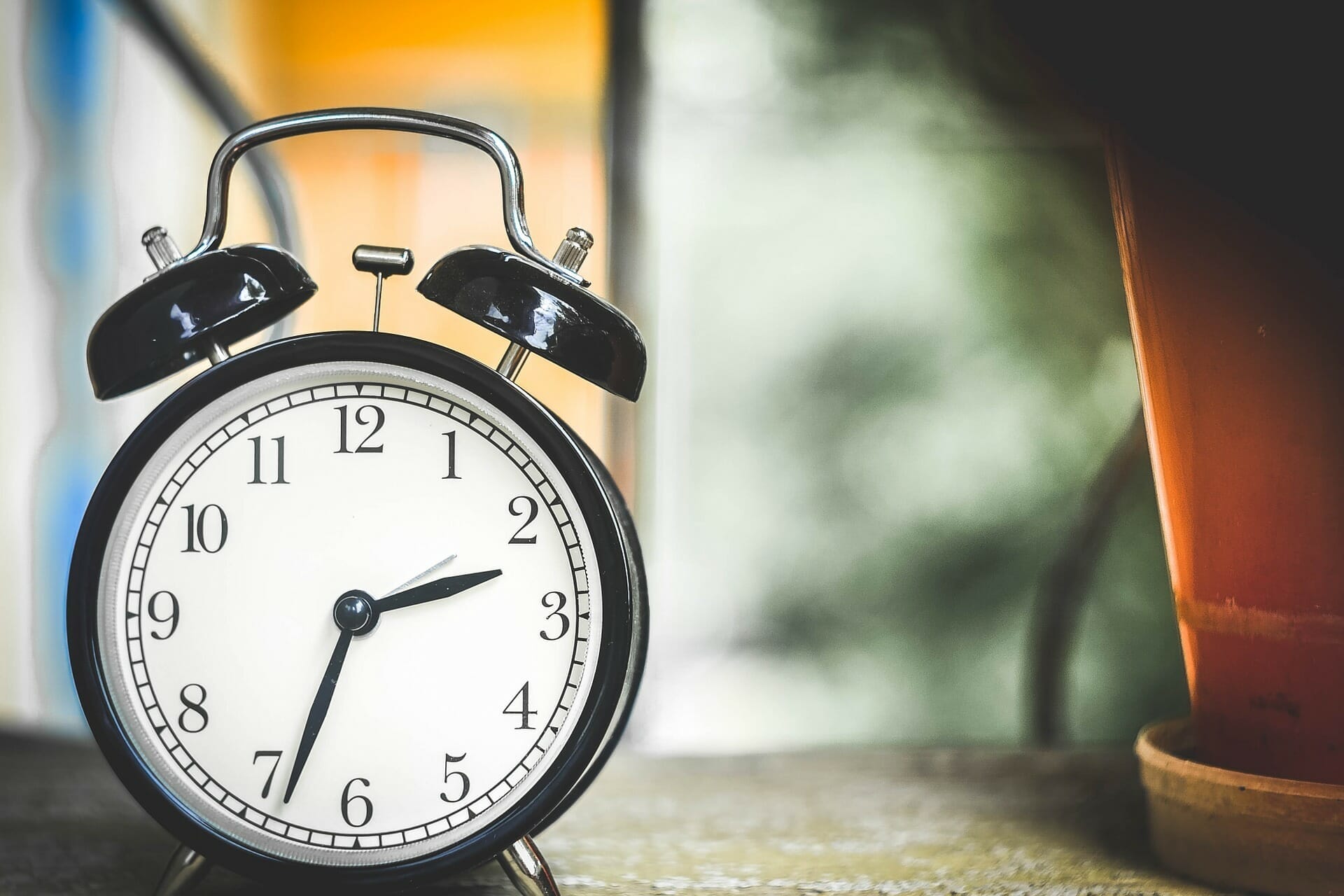
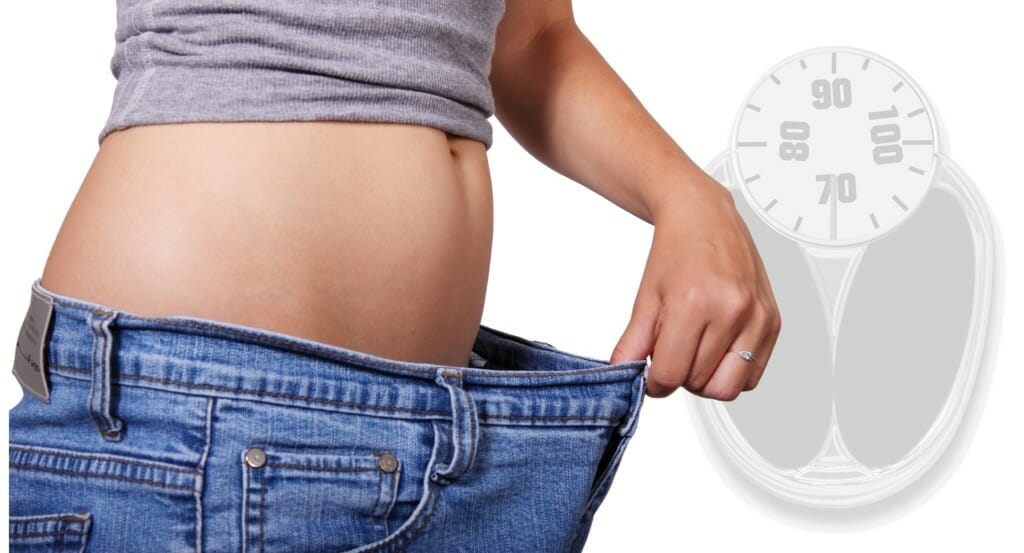

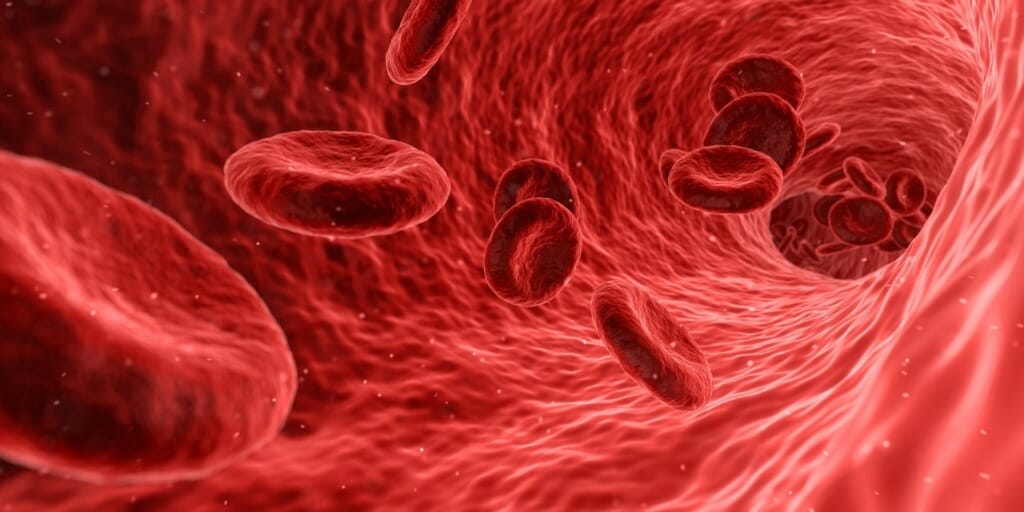

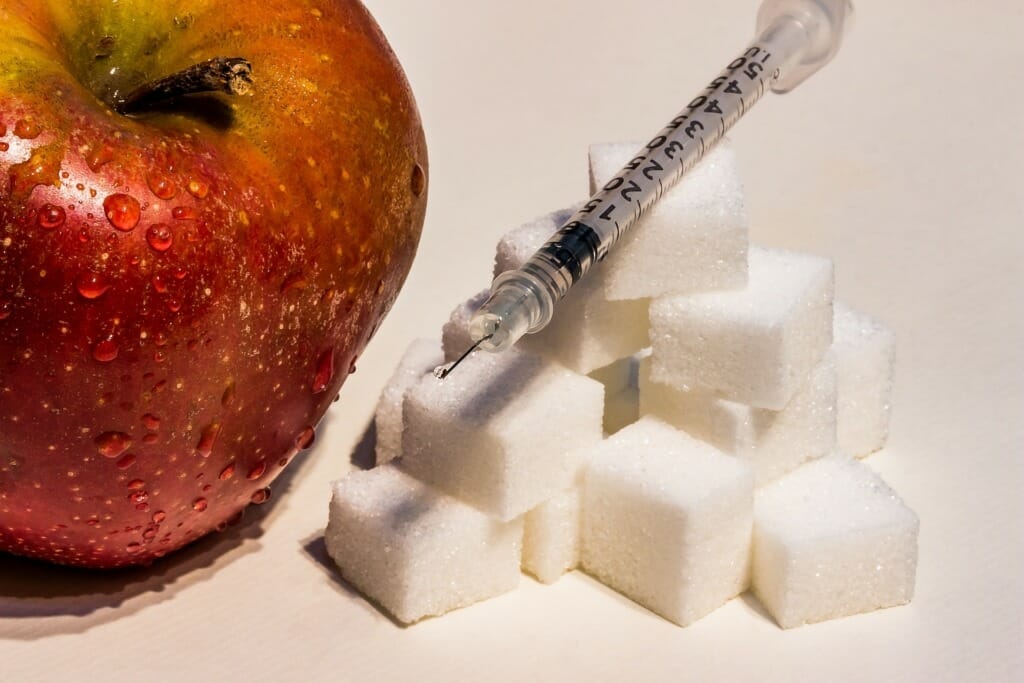
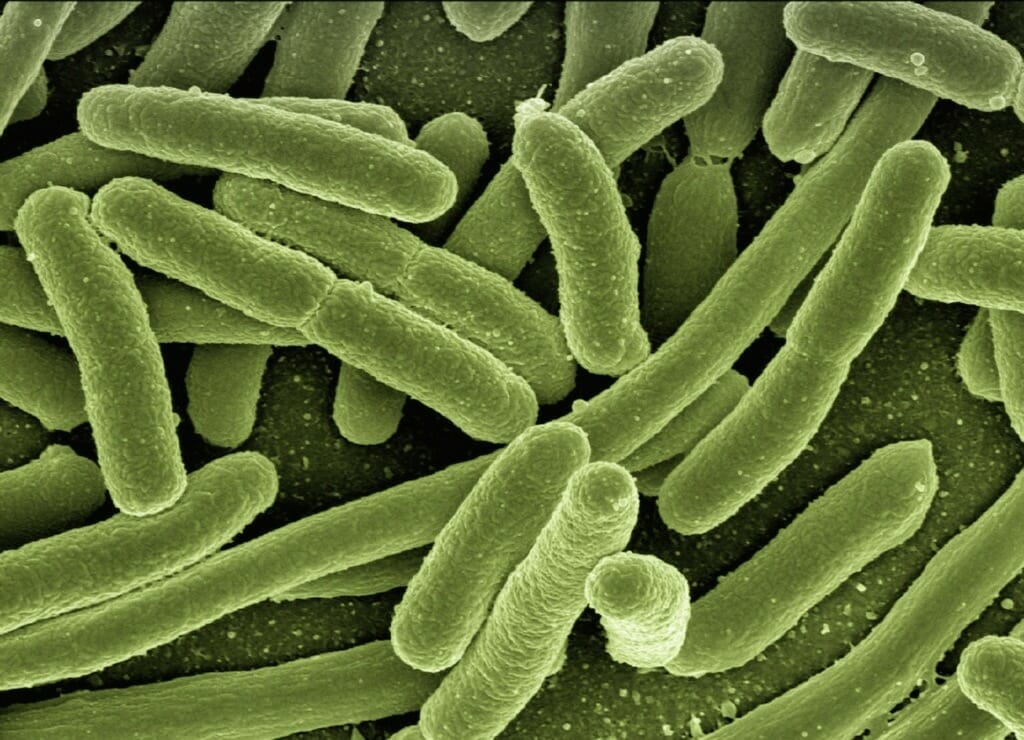
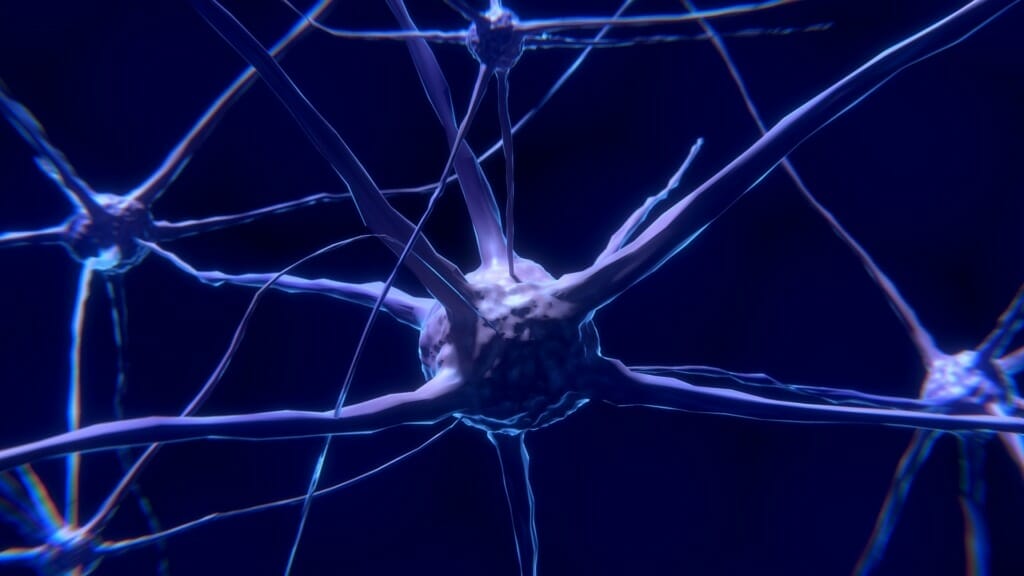
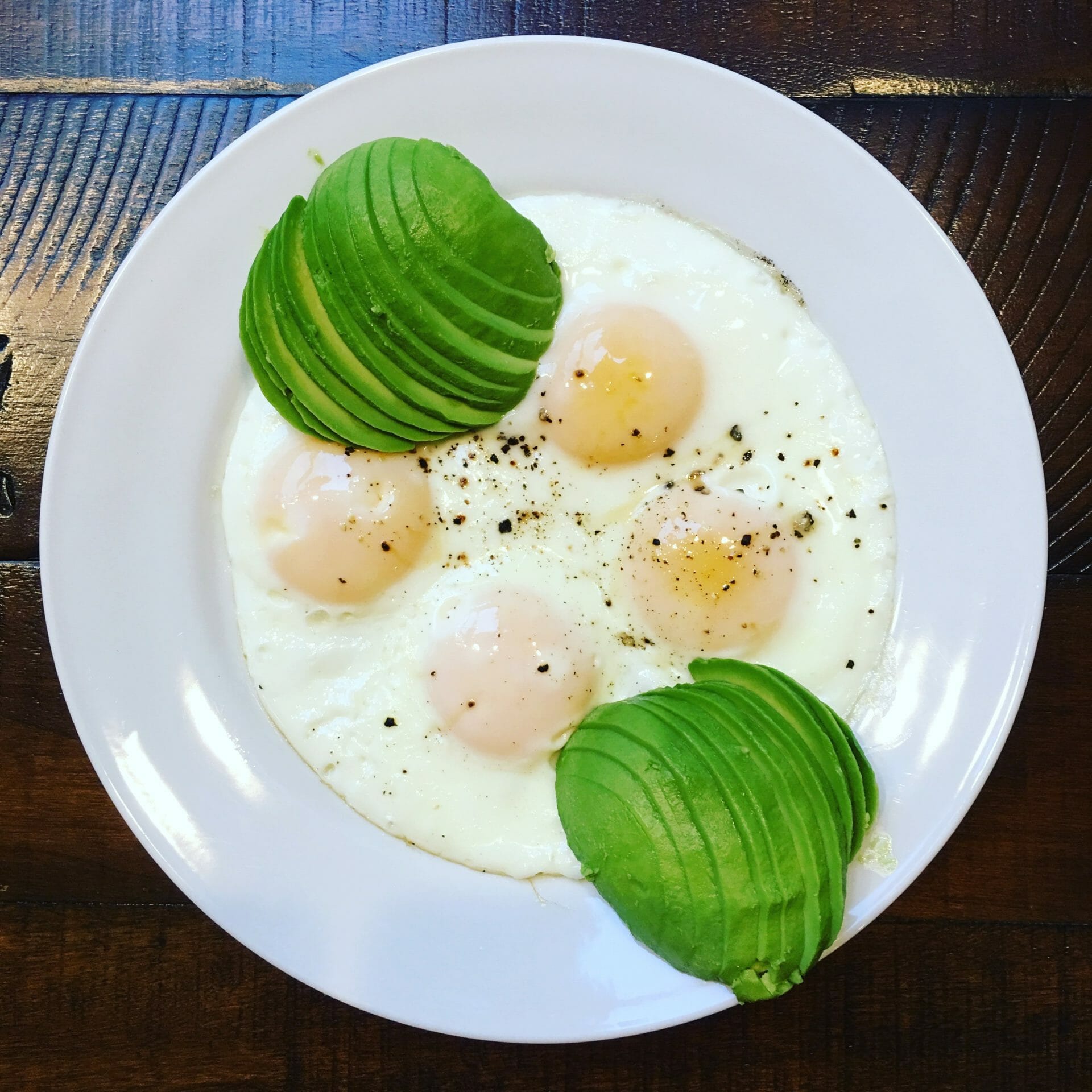


Michael – How do you make sure you consume enough protein during the eating window. I am aiming for at least 120g of protein a day. I ‘fast’ naturally for 13-14 hours without any thinking but I have been venturing out and trying 16:8 style and I cannot meet my daily protein intake. And I really need it to stay fit and not skinny.
My second question is around devices. Do you use (or used) a keto monitor? I am certain my body doesn’t switch well to ketones usage. with 16 hours fasting I get headaches/jitters. I suspect I get hypoglycemic even and I just ordered a CGM to try and see.
Thank you!
Hi Irina,
honestly, I’ve never counted how much protein I consume. However, on average I eat over a pound of red meat (80 grams), four eggs (24 grams), cheese and yoghurt. That’ll probably add up some somewhere around 120 grams. What else do you eat that might take away from how much protein you consume?
I use Biosense (check the review on my blog) and have noticed that when I eat more carbs for a while, 16 hours isn’t enough to get into ketosis. But your jitters and headaches are likely caused by not consuming enough salt (and electrolytes in general). So increase your sodium intake and you should feel much better.
Cheers,
Michael
Thank you for your reply! I haven’t thought of sodium. Great tip. I usually drink electrolytes throughout the day but I think I kind of forget when I am fasting. Noted. :)
As of my protein in take. It is not that I eat something that keeps me full and no room for enough protein but more like I d onto have enough time to eat this much haha. I am not that hungry that often, I suppose. I also eat 4 eggs a day, lots of red meat, cottage cheese and whey and beef bone protein powders. I just find it very difficult to eat this much in 8 hour. I know, good problem to have haha
PS. LOVE your beef liver supplement. Best!
Hi there !
French reader here ! :D
I was wondering about the multivitamin I take every morning, even when I’m fasting for 24h. Do you think it’s a good idea ? Or I’d be better with only water and coffee ?
What are your (or other readers) thought about this ?
Thanks
Hey Alex,
as long as you feel fine taking your multi-vitamin on an empty stomach you can continue doing that. Some people are sensitive to certain minerals (e.g., zinc) and B-vitamins with an empty stomach.
Cheers,
Michael
Does Beta Alanine (the real only component I believe you need from preworkouts and maybe a teensy bit of caffeine if you need that kick) break your intermittent fast? I know you said its debatable but it is an amino acid however it has zero calories. Would it be processed as a source of energy by your body or merely a compound it uses to buffer acid? So then does that mean that pre and post workout amino acids are means to boost muscle production and that these will have calories? and thus the name Branched Chain AA?
Hi Emmanuel,
that’s an excellent question and it depends a bit on what fasting benefits you’re after. From a caloric perspective, supplementing with beta-alanine won’t have any negative impact because it has next to no calories. However, there is evidence that certain amino acids (in particular, leucine) can impair autophagy and other cell-recycle programs that kick in during extended fasts. I haven’t seen studies on the impact of beta-alanine and autophagy but it’s something to keep in mind and stay away from BCAAs if you’re after those longevity benefits of fasting.
Bottom line: Technically, you’re breaking your fast when you consume amino acids, fatty acids, ketones or other forms of nutrients. Practically, it might not make a difference for your fasting efforts.
Hope that helps!
Cheers,
Michael
hello. great article. I’ve ben trying to do 16 fast but often find I get a headache in the morning when I’m fasting. any tip?
Hi Coco!
There could be a couple of factors at play here.
You could be low on electrolytes (sodium, magnesium, calcium, potassium) or just water. You might also be in carb “withdrawal.” How is your diet? Are you on keto or a “regular” diet? In the case of the latter, your body might not be able to switch from glucose to fat as its primary source of fuel. So when you run low on glucose (because of the fast), you get a headache. The solution to this problem is to learn how to use fat for fuel by eating fewer carbs and more fat (e.g., a ketogenic diet).
Cheers,
Michael
I love this article. And I love 16/8 . It’s so easy . One question if I take tablets ie medication I’m the morning does this spoil the fast .
Best Helen
Hi Helen,
That’s a good question. Most pills and capsules have fillers and it depends on what they are made out of. If they are non-caloric (i.e. fiber), it shouldn’t matter. If they are made out of starch or some other caloric components, they might impact your blood sugar ever so slightly.
If that’s a concern for you, I’d have a chat with your doctor to see what you can do.
Cheers,
Michael
A very succinct summary, thanks very much. Early in the article you mention woman shouldn’t go past 15 hours. I’ve read different opinions on this, Dr Fung who is considered an expert in this area says woman can successfully fast for extended periods. It’s a little confusing, Dr Mercolas new book doesn’t distinguish between men and woman and suggests basically a 42 hr fast with one small meal during that time. My wife and I are going to try the 16:8 approach. Thanks again.
Hi Curt,
Great feedback, thanks! I meant to remove that statement during my last round of editing but it slipped through the cracks. It’s removed now!
Thanks
Michael
Thank you for share your knowledge about Intermittent Fasting . It is very good approach to make the public aware of their health.I have also a blog related to Enjoy the Intermittent fasting benefits.
To more know click here -https://goo.gl/ZT7Gqt